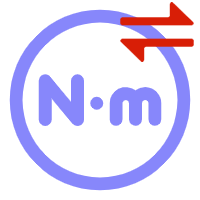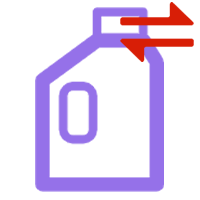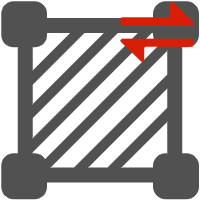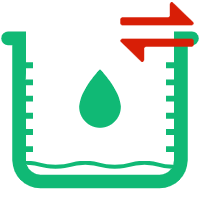
Cubic Feet to Cubic Yards Converter
Convert cubic feet to cubic yards instantly with our volume converter. Perfect for construction projects, concrete calculations, landscaping, soil volume, and material ordering. Get accurate results.
Cubic Feet to Cubic Yards Converter
Enter cubic feet value and click Convert to get cubic yards.
Enter the value to convert
Relationship Between Cubic Feet and Cubic Yards
The conversion between cubic feet and cubic yards is based on the imperial measurement system where 1 cubic yard equals exactly 27 cubic feet.
1 yd³ = 27 ft³
Therefore,
1 ft³ = 0.037037 yd³ (or 1/27 yd³)
To convert cubic feet to cubic yards, we divide the value in cubic feet by 27.
For example, 27 cubic feet equals 1 cubic yard, 54 cubic feet equal 2 cubic yards, and 13.5 cubic feet equal 0.5 cubic yards.
This relationship exists because 1 yard = 3 feet, so 1 yd³ = 3 ft × 3 ft × 3 ft = 27 ft³.
Cubic Foot (ft³)
What is a Cubic Foot (ft³)?
A cubic foot (symbol: ft³ or cu ft) is a unit of volume in the imperial and US customary measurement systems. It represents the volume of a cube with sides of exactly one foot in length. One cubic foot equals approximately 28.3168 liters or 7.48052 US gallons. The cubic foot is commonly used in the United States for measuring volumes of materials, spaces, and containers.
History and Origin of the Cubic Foot
The cubic foot originated from the imperial system of measurement, which evolved in England over centuries. The 'foot' as a linear measurement has ancient origins, and the cubic foot naturally developed as a way to measure three-dimensional space. The unit became standardized as part of the British Imperial System in 1824 and continues to be used primarily in the United States, United Kingdom, and other countries that follow imperial measurements.
Modern Applications of Cubic Feet
- Construction: Concrete volume, building materials, room dimensions
- HVAC: Air conditioning capacity measured in cubic feet per minute (CFM)
- Shipping: Cargo volume, freight calculations, container capacity
- Natural Gas: Gas consumption and billing (often in hundreds of cubic feet)
- Refrigeration: Refrigerator and freezer capacity
- Landscaping: Mulch, soil, and gravel measurements
- Storage: Storage unit sizes, warehouse space
- Aquariums: Tank volume for fish and aquatic environments
Cubic Foot in Construction and Engineering
The cubic foot is essential in construction and engineering:
Concrete Pouring: Calculating concrete needed for foundations and structures
Room Volume: Determining heating/cooling requirements
Material Estimation: Ordering bulk materials like sand, gravel, or stone
Airflow: Ventilation systems measured in CFM (cubic feet per minute)
While many countries have adopted the metric system, the cubic foot remains widely used in the US construction industry and for measuring household appliances.
Cubic Yard (yd³)
What is a Cubic Yard (yd³)?
A cubic yard (symbol: yd³ or cu yd) is a unit of volume in the imperial and US customary measurement systems. It represents the volume of a cube with sides of exactly one yard (3 feet) in length. One cubic yard equals exactly 27 cubic feet or approximately 764.555 liters. The cubic yard is the standard unit for measuring large volumes of materials in construction, landscaping, and excavation.
History and Origin of the Cubic Yard
The cubic yard derives from the yard, a unit of length that has been used in England since at least the 12th century. The term 'yard' possibly comes from the Old English 'gerd' meaning a rod or measuring stick. King Henry I of England is said to have standardized the yard as the distance from his nose to the tip of his outstretched thumb. The cubic yard became the practical standard for measuring large volumes of bulk materials as trade and construction industries developed.
Modern Applications of Cubic Yards
- Concrete: Standard unit for ordering ready-mix concrete for construction
- Landscaping: Mulch, topsoil, compost, decorative stone delivery
- Excavation: Earth removal, digging projects, land grading
- Waste Management: Dumpster sizes, landfill volume measurements
- Aggregate Materials: Gravel, sand, crushed stone for construction
- Asphalt Paving: Calculating asphalt needed for road and driveway projects
- Mining: Volume of extracted materials
- Shipping: Large cargo volume calculations
Why Cubic Yards Matter
The cubic yard is particularly important in construction and landscaping:
Industry Standard: Most bulk material suppliers price by the cubic yard
Practical Scale: Appropriate size for truck loads and large projects
Easy Estimation: Simple to visualize and calculate for rectangular spaces
Cost Efficiency: Ordering in cubic yards is often more economical than smaller units
A single cubic yard can be visualized as a cube 3 feet wide, 3 feet long, and 3 feet tall, making it easier for contractors and homeowners to estimate material needs for projects.
Cubic Feet to Cubic Yards Conversion Table
The conversion of cubic feet to cubic yards for certain values are provided below:
- Cubic Feet [ft³]
- Cubic Yards [yd³]
- 1 ft³
- 0.037037 yd³
- 3 ft³
- 0.1111 yd³
- 5 ft³
- 0.1852 yd³
- 10 ft³
- 0.3704 yd³
- 13.5 ft³
- 0.5000 yd³
- 27 ft³
- 1 yd³
- 50 ft³
- 1.8519 yd³
- 54 ft³
- 2 yd³
- 81 ft³
- 3 yd³
- 100 ft³
- 3.7037 yd³
- 135 ft³
- 5 yd³
- 200 ft³
- 7.4074 yd³
- 270 ft³
- 10 yd³
- 500 ft³
- 18.5185 yd³
- 810 ft³
- 30 yd³
- 1000 ft³
- 37.0370 yd³

Conversion Calculators














































